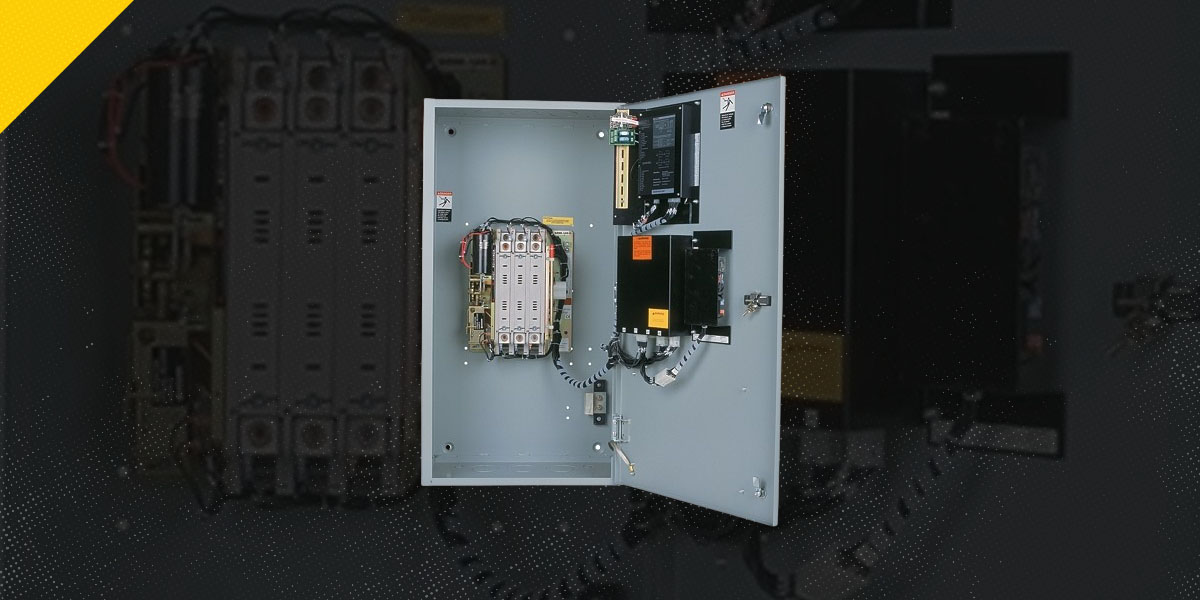

The amperage (amp) rating on a breaker panel signifies the maximum electrical current the panel can handle. Carefully assessing how many amps are necessary for an electrical panel at your commercial facility is crucial. It helps ensure proper performance and maintain a safe working environment for your team.
Explore this guide to electrical panel amp sizes and why determining the right amperage is highly important to your commercial operation.
Below are key reasons why the right amp rating is critical for your commercial facility and its primary applications.
Your facility may experience circuit overloads if your breaker panel amperage is too low for your property’s electrical demands. Overloading can cause breakers to trip frequently and can be a serious fire hazard. Proper amps ensure your electrical system can endure faults without damage, ultimately protecting your personnel, equipment, and appliances.
An adequately sized electrical panel is key to helping your facility’s electrical devices operate efficiently, supporting optimal performance and output. If your breaker panel is underpowered, you may experience voltage drops that can make equipment malfunction or operate poorly.
Proper electrical panel amperage also supports greater energy efficiency, helping your property consume less electricity to lower utility costs and reduce your business’s carbon footprint.
Commercial facilities must be familiar with applicable local and national building regulations, such as those established by the National Electrical Code (NEC). These requirements specify panel sizing based on your facility’s expected load and occupancy.
Proper amperage ratings are essential for passing facility inspections, combating potential fines, and complying with relevant building codes.
Consider your business’s future growth potential. Your electrical panel should allow for expansion without the threat of overloading. Assess the additional equipment or facility upgrades you may need in the future. If your operation is growing rapidly, investing in higher amp ratings can support increasing electrical demand for smoother development. Your business can reduce the likelihood of power-related disruptions later.
To find the amp rating for your facility’s current electrical panel, follow these steps:
If the breaker panel does not have a label, look at the individual breakers. Each circuit breaker has a number printed on it, usually on the handle or the side. This number shows the amp rating, such as 30A, 40A, or 50A. If you can’t find the rating or feel unsure, consult with a licensed electrician for assistance.
The main circuit breaker should tell you the maximum amount of current the entire panel can safely and efficiently handle.
To find the total amps in a breaker panel on your own, begin by recording the amp ratings for each of the breakers in your facility’s panel. Add each of these ratings together to get the total amps. For example, if you had two 40A breakers and one 50A breaker, your calculation would look like this: 40A + 40A + 50A = 130A
Confirm that your total amps don’t exceed the specified number for your breaker panel. Working with a licensed electrician to determine whether your panel can handle your facility’s energy demands is always best.
Follow these steps to determine the right electric amperage for your facility’s breaker.
Begin by identifying all the electrical devices, systems, and appliances used in your facility. Each piece of equipment will have a power rating, typically expressed in watts (W) or kilowatts (kW). Consider upcoming growth and how your electrical load may vary.
Working with an expert will make calculating your property’s total power requirements significantly easier. To determine this number, you need to convert your equipment’s power ratings from watts or kilowatts to amps.
Once you complete that conversion, you can add up the total amps for all machines, systems, and appliances. These insights will help you assess your maximum power needs and minimum amperage rating.
In most commercial settings, you do not need to utilize all of your equipment at full capacity at the same time. However, assessing the maximum expected load is crucial so you don’t overload your breaker and disrupt operations. Consider demand factors such as:
By understanding your electrical load, total power requirements, and changes in demand, you can make a more informed decision.
Choose a breaker size that can safely accommodate your facility’s load. It should be rated higher than your typical load to handle fluctuating currents and provide a safety margin. Some experts suggest choosing an option that is 25% higher than the circuit’s expected continuous load.
Before landing on your electrical panel amperage, reference all applicable codes and regulations. Doing so will help protect your business from legal action and verify that your electrical system is built for optimal safety. Local building codes vary according to your municipality. Consider consulting with a local expert.
With all the above suggestions in mind, remember that working with a licensed electrician or electrical engineer is always advisable. They can perform accurate load calculations and are well-versed in all related regulations, ensuring your electrical system’s design suits your current and future needs.
Partnering with an expert and investing in high-quality power systems from reputable brands like Caterpillar is key to optimizing operations and supporting your business’s long-term growth.
For over 65 years, Thompson Power Systems has provided northwest Florida and Alabama with critical power solutions. Our team can help your facility with durable backup and emergency power systems.
In addition to equipment sales and rentals, we offer unmatched customer service so your business can always rely on us to answer questions, guide decision-making, and help you get the best equipment for every job. We offer extended service coverage to protect your equipment — and peace of mind. Our highly skilled technicians are just a phone call away.
Contact Thompson Power Systems to get started today.